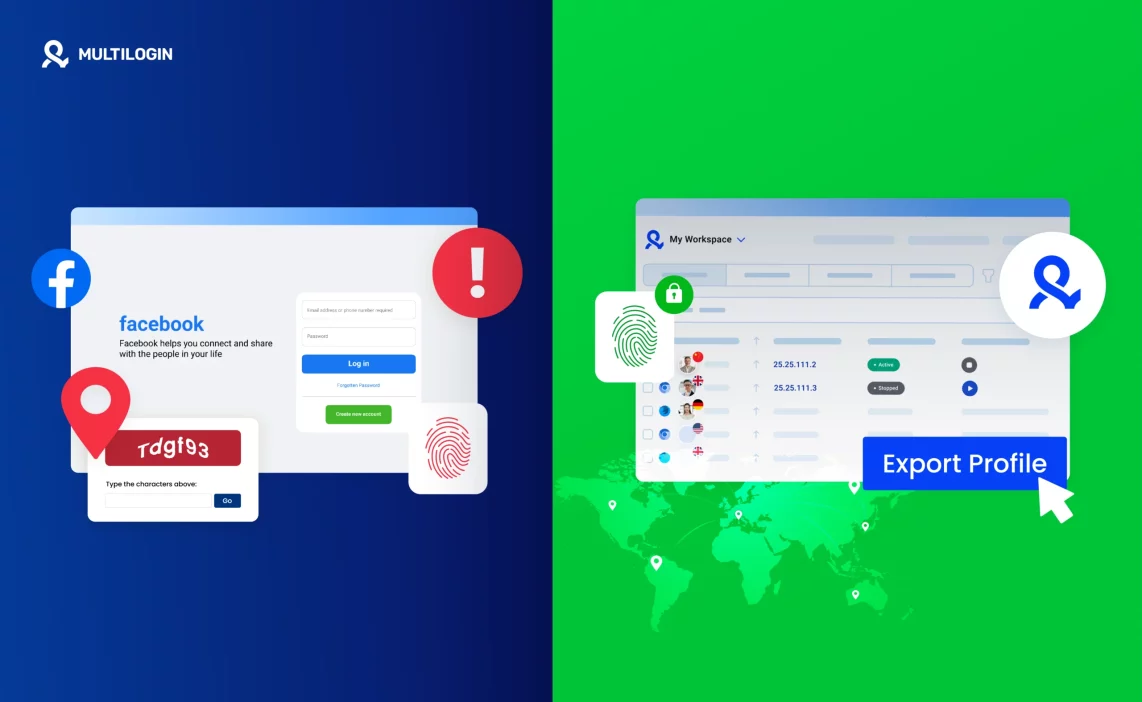If you need accounts for QA, ad testing, or research, this guide is for you. The main risk is getting accounts flagged or suspended — usually from inconsistent IPs, device fingerprints, wiped cookies, or automation that looks robotic.
You can’t safely bulk-create or reuse accounts without following platform rules and technical hygiene. This guide gives compliant options, plus a Multilogin-ready workflow: one profile per account, country-matched residential proxies, realistic fingerprints, and a 7–14 day warm-up to build natural session history. Follow those steps and you lower the chance of bans while keeping work auditable and repeatable.
How to farm Facebook accounts
If you need accounts for legitimate work — QA, ad previews, feature testing, or academic research — this section shows a safe, repeatable approach. The goal is not to evade rules but to make test accounts look like normal users: consistent IPs, stable device identity, preserved cookies, and slow warm-up. Use platform APIs and test-user features where possible; use Multilogin only to keep profiles separate, consistent, and auditable.
1. Plan purpose and scope
Brief explanation: Start by naming the exact reason for each account. Are you testing ad creative? Checking UX flows? Researching localization? Limit each account to a single purpose and record that purpose somewhere visible. That stops scope creep and reduces the chance of accidental misuse.
Multilogin: Add the purpose to the profile’s notes or tags (e.g., “Ad preview — FR market — QA team”). That makes profiles searchable and prevents teammates from reusing a test profile for other tasks.
2. Create one profile per account
When multiple Facebook accounts share the same browser environment, Facebook links them quickly. Treat one profile like one device — keep them separate.
In Multilogin you create an isolated profile for each account. Each profile has its own cookie storage, local storage, extensions, and settings. Practically, that means one profile holds one account’s entire session data so nothing “leaks” across accounts.
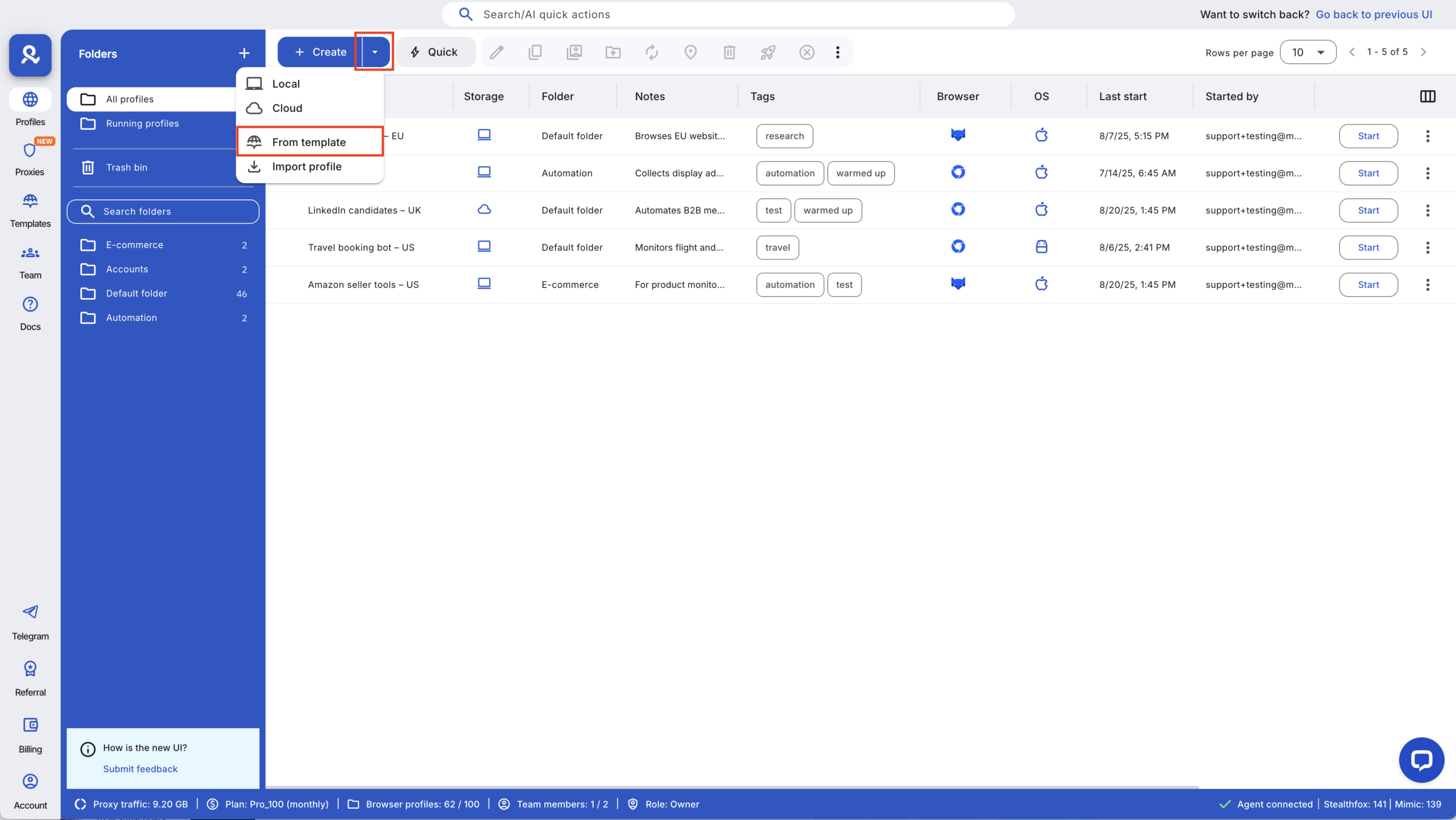
3. Attach a country-matched premium residential proxy
Facebook flags sudden or odd IP locations. Using a residential IP from the same country the account should appear to be in reduces obvious location-based flags.
Multilogin includes premium residential proxy traffic in all plans. Apply a country-matched proxy template to the profile and save it. That ties a profile to one geographic IP range and makes logins look local rather than coming from datacenters or generic VPNs.
Consistent, local IPs help the account keep a stable “home” and match the locale/timezone settings you set next.
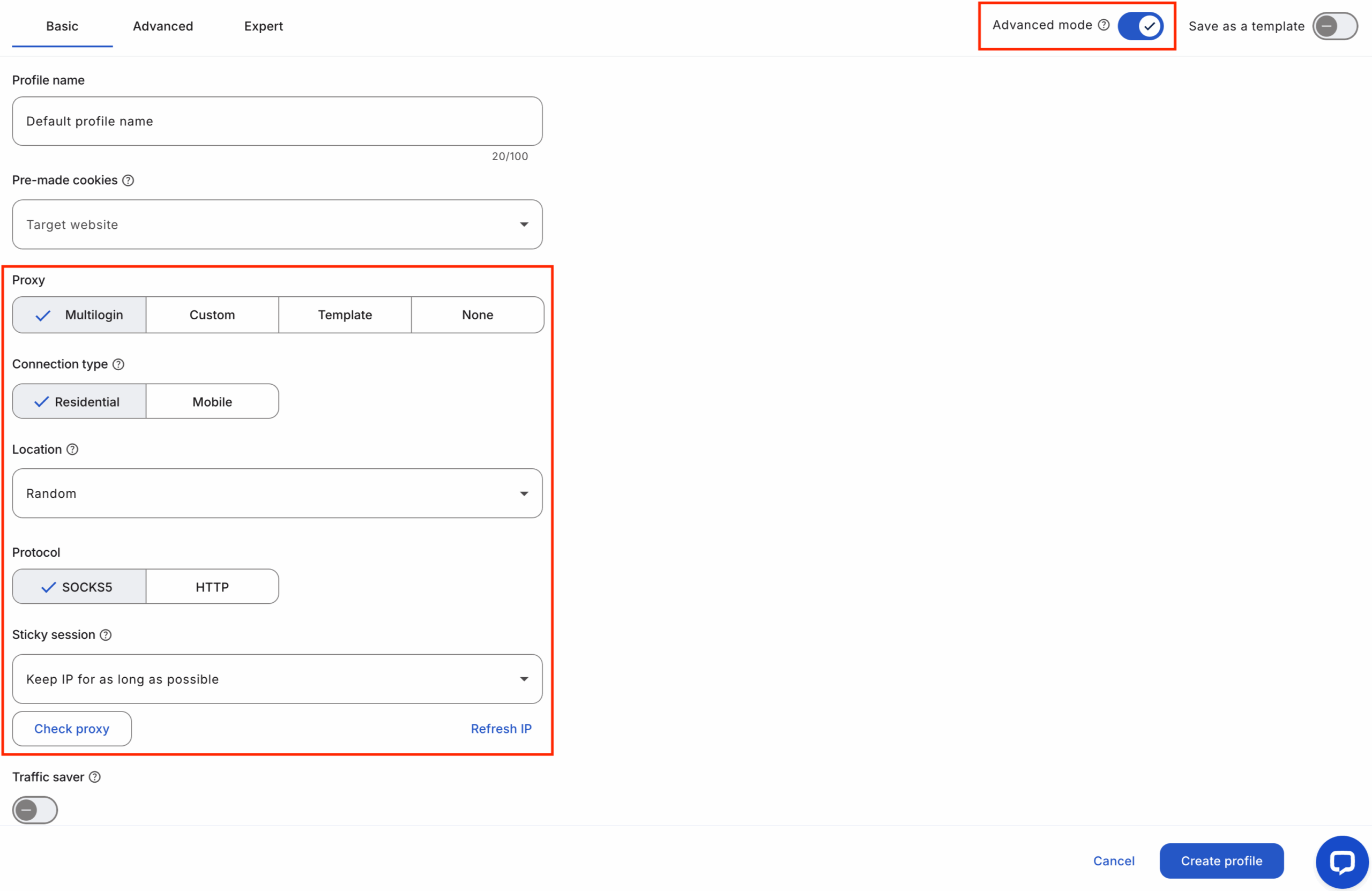
Stop account links! try Multilogin now for €1.99!
4. Set locale and timezone to match IP
If your IP says “France” but the browser is set to “Japan,” that mismatch looks suspicious. Make language and timezone match the IP.
Multilogin: Set the profile’s locale, timezone, and preferred language to match the proxy country. Multilogin keeps those settings attached to the profile so every session uses the same combo.
Small details like language and time are quick checks Facebook uses to link accounts to real users — consistency reduces friction.
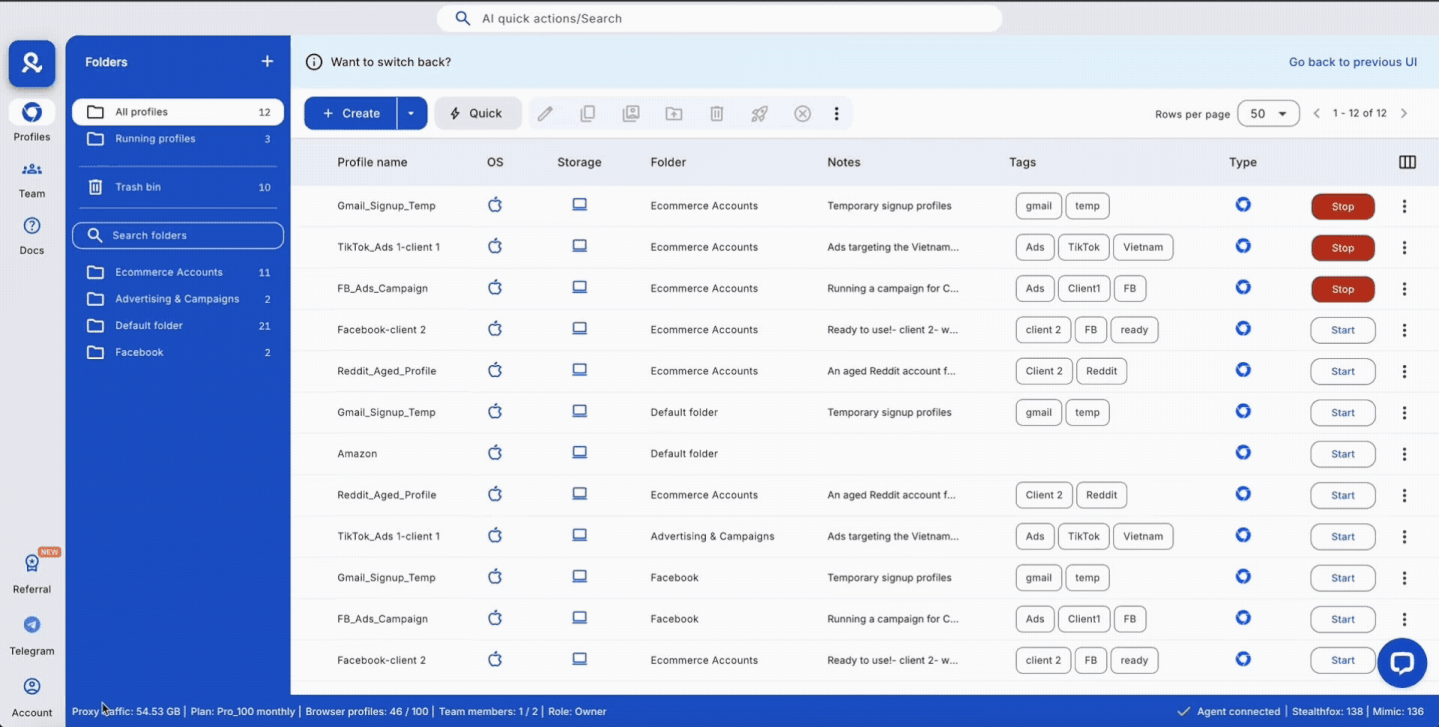
5. Generate a realistic fingerprint
Fingerprint = device signals (screen size, fonts, WebGL, user agent). Avoid obviously synthetic or default values — they stand out.
Multilogin lets you choose a fingerprint baseline (desktop or mobile) and adjust 25+ parameters so the profile looks like a real device. Pick realistic combinations (screen size + user agent + GPU values) and lock them per profile. Test the profile on an independent checker to confirm it reads as a normal device.
Why it matters: A consistent, believable fingerprint makes Facebook treat each profile like a real device rather than a shared or spoofed setup.
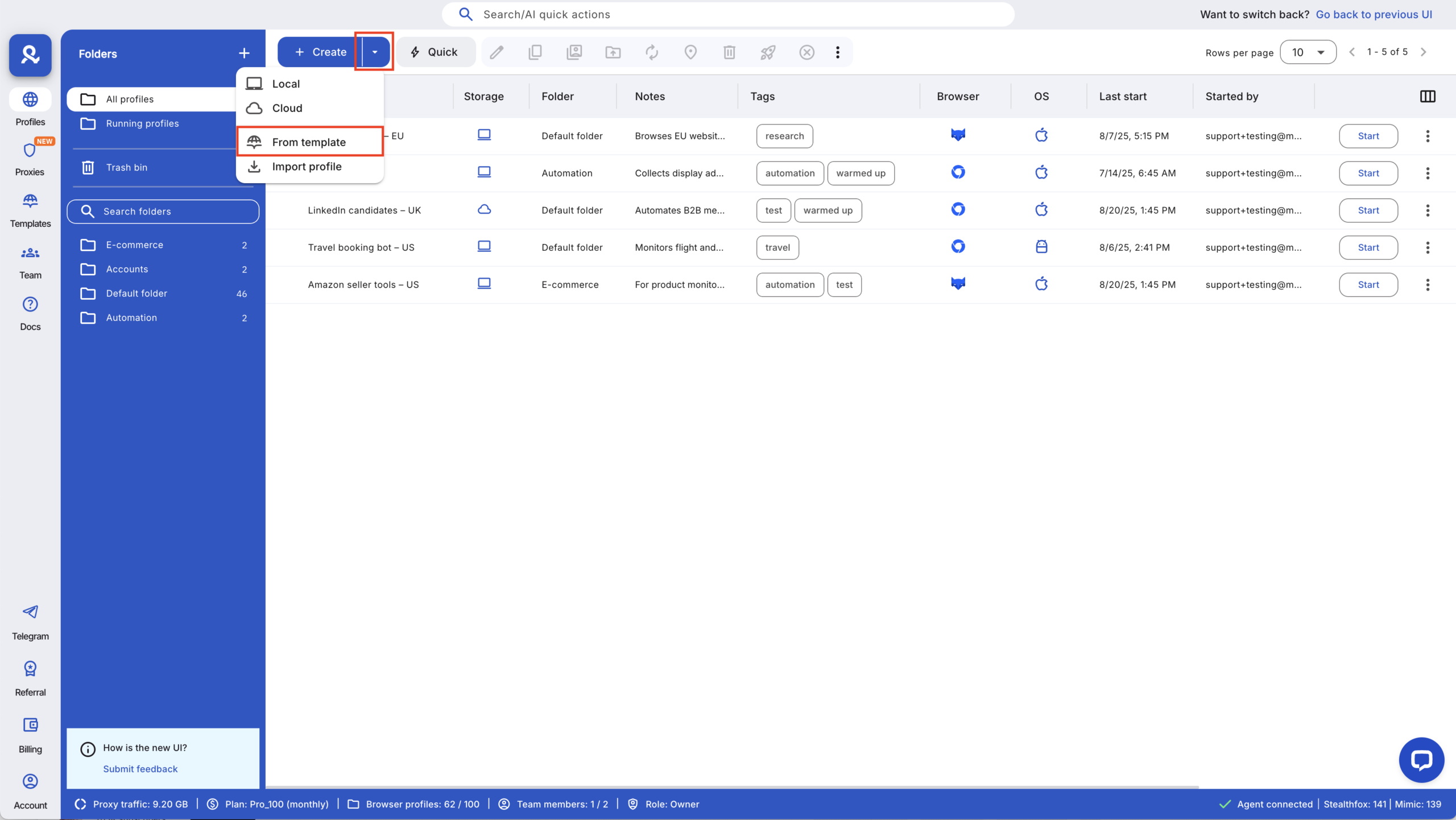
6. Warm up accounts gradually
New accounts or profiles with no history look suspicious. Start with small, normal actions — log in, view profile pages, like a few posts — and slowly increase activity over 7–14 days.
Use Multilogin to keep cookies and history intact between sessions. Optionally use pre-farmed cookies for lawful test accounts to simulate prior browsing. Warm-up steps done inside the profile will persist and make later activity appear natural.
Gradual activity builds the browser history signals Facebook expects from a returning user.
7. Save cookies and backup profiles
Saving cookies and the full profile state prevents you from rebuilding sessions each time. A restored profile looks like the same returning user.
Multilogin: Export profiles (cookies, storage, fingerprint settings) to secure local or cloud storage. When you need to move a profile between machines, import the profile rather than recreating it.
Backups reduce setup time and stop mistakes that come from manual reconfiguration — and they preserve the history signals Facebook relies on.
8. Automate carefully and humanely
Automation is allowed for testing but must look human. Randomize delays, re-use sessions, and avoid identical, fast loops across many profiles.
Multilogin integrates with Puppeteer, Postman, Selenium, and Playwright and offers a CLI for batch tasks. Use these integrations to launch profiles while reusing saved cookies and keep scripts conservative (slow, randomized actions, low retry limits).
Human-like automation reduces the behavioral signatures that trigger bans.
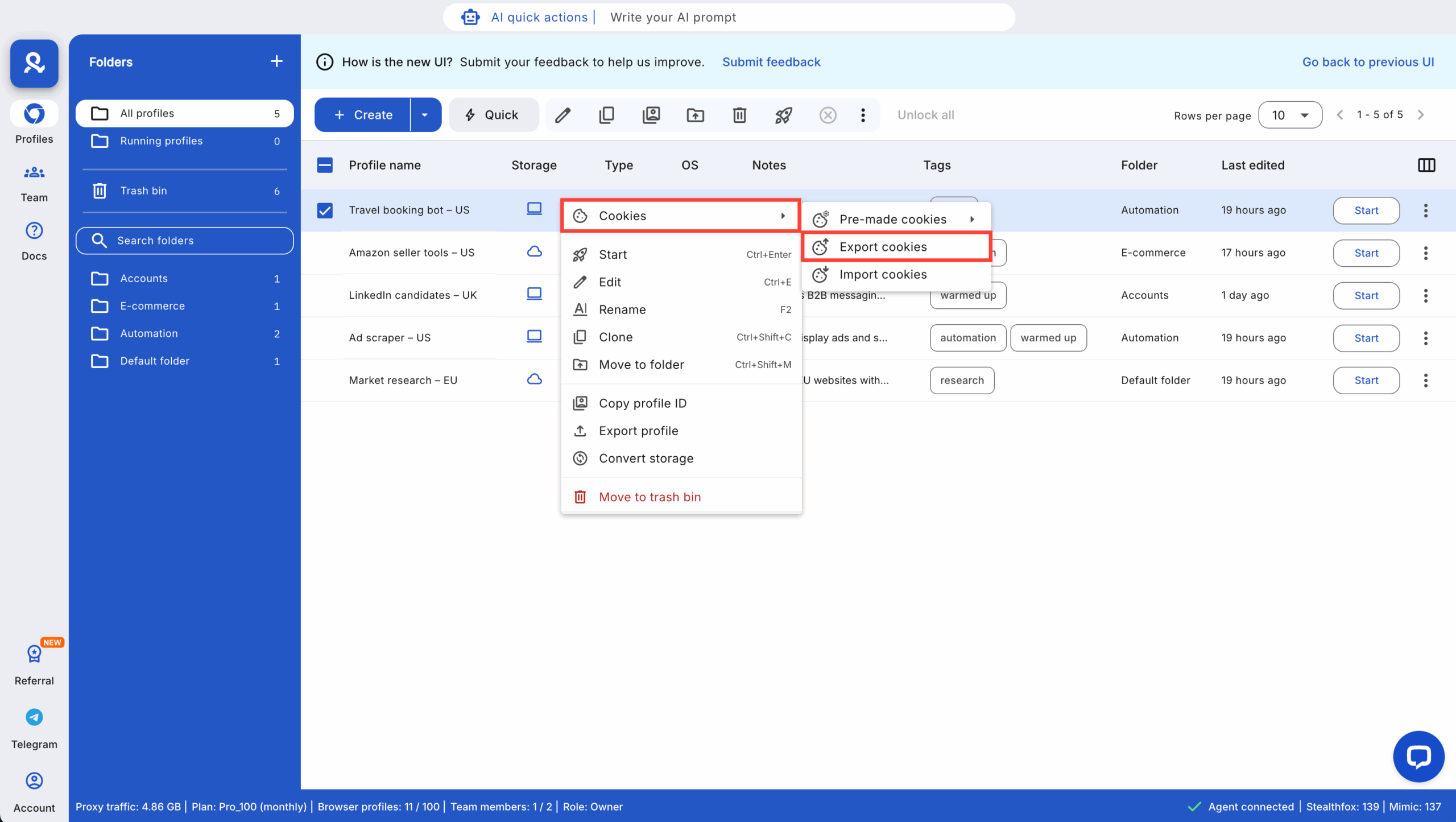
9. Monitor, tag, and log activity
Watch for sudden IP changes, repeated login failures, and CAPTCHAs. Keep a simple log of major profile changes and who made them.
In Multilogin, use the running profiles dashboard and profile notes to track active sessions, IP addresses, and tags. Tag each profile with its owner and purpose so the root cause is clear if an alert appears.
Quick detection lets you stop risky activity early and reduce account damage.
10. Scale using templates and role controls
Once a workflow works, scale with templates — not manual copy-paste. Use role-based access to prevent accidental reuse or leaks.
Save proxy + fingerprint + locale combos as templates. Use Multilogin’s bulk actions to apply templates across many profiles. Invite teammates with role-based permissions so only authorized people can start or edit profiles.
Templates keep setups consistent; role controls keep operations auditable and safe at scale.
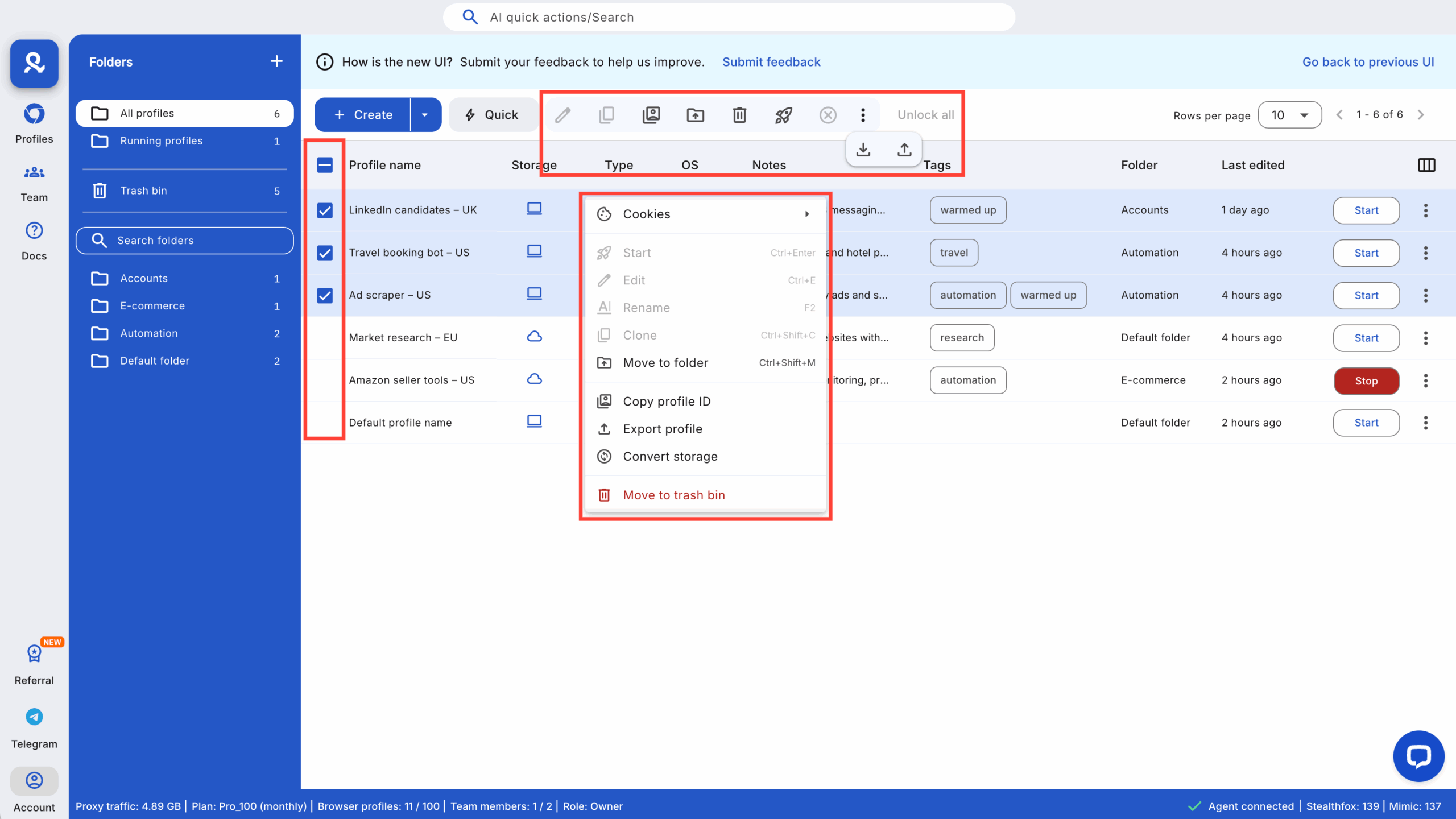
Short case study
Before: A small studio lost two Facebook accounts in three weeks after using the same laptop and switching between random VPN servers.
Action: Each account was moved to its own Multilogin profile, assigned a country-matched residential proxy, and warmed up with light, manual activity over two weeks.
After (60 days): No new suspensions; stable access for five managed accounts and a repeatable, auditable workflow.
Quick checklist: safer ops in 10 minutes
- Create one profile per account
Multilogin: Click New Profile → give it the account name or ID. One account = one profile. - Use a country-matched residential proxy
Multilogin: Go to Profile Settings → Proxy → pick a residential IP from the same country as the account → save as a template. - Match timezone and language to the IP
Multilogin: In Profile Settings, set Timezone and Locale to the same country as your proxy. - Set a realistic fingerprint
Multilogin: In Fingerprint Settings, choose desktop or mobile → adjust screen size, fonts, WebGL → lock the fingerprint so it stays the same. - Warm up slowly (7–14 days)
Multilogin: Log in, view pages, like a post or two. Use pre-farmed cookies if needed. Keep actions light and steady. - Save cookies and back up the profile
Multilogin: Go to Export Profile → include cookies and storage → save to cloud or local storage. - Automate with care
Multilogin: Connect through Puppeteer, Selenium, or Playwright. Add random delays, limit retries, and reuse sessions instead of logging in again and again. - Tag and add notes
Multilogin: In the profile, add tags like “QA – US” or “Ad Test – FR.” Notes make it clear who owns the account and why it’s used. - Check running sessions
Multilogin: Open the Running Profiles Dashboard → monitor active IPs, login status, and errors. - Scale with templates and roles
Multilogin: Save your best setup (proxy + fingerprint + locale) as a template. Use Bulk Actions to apply it to new profiles. Give teammates role-based access so nothing gets mixed up.
Final verdict: How to farm Facebook accounts
If you need accounts for legit work—QA, ad previews, or research—do it with strict controls: one profile per account, country-matched residential IPs, stable fingerprints, preserved cookies, and a 7–14 day warm-up. Following that checklist cuts the common technical triggers that lead to suspensions and makes your setup auditable and repeatable. How to Farm Facebook Accounts correctly means building test accounts that behave like real users, not buying or misusing them.
FAQs
No — buying accounts violates Facebook’s terms and carries fraud and security risks. Create or use test accounts under controlled, compliant processes instead.
Plan 7–14 days of light activity: log in, view feeds, like a few posts, and gradually increase actions that match the account’s purpose.
Use premium residential proxies matched to the account’s country. Avoid datacenter IPs and public VPNs—they trigger flags faster.
Automation can be safe if it mimics human behavior—randomized delays, session reuse, low retry limits, and small-scale testing before scaling.
Pause automation, keep the same proxy and fingerprint, warm the profile manually for 48–72 hours, then retry with conservative settings.
Yes: one profile per account → country-matched proxy → match timezone/locale → lock fingerprint → warm up 7–14 days → export backup → monitor and tag.
